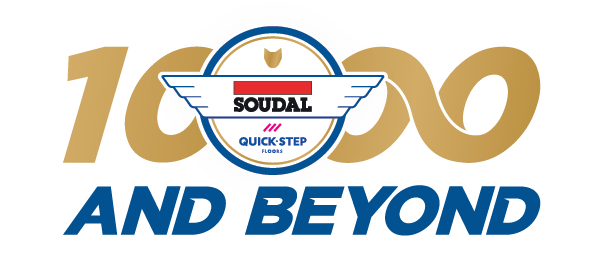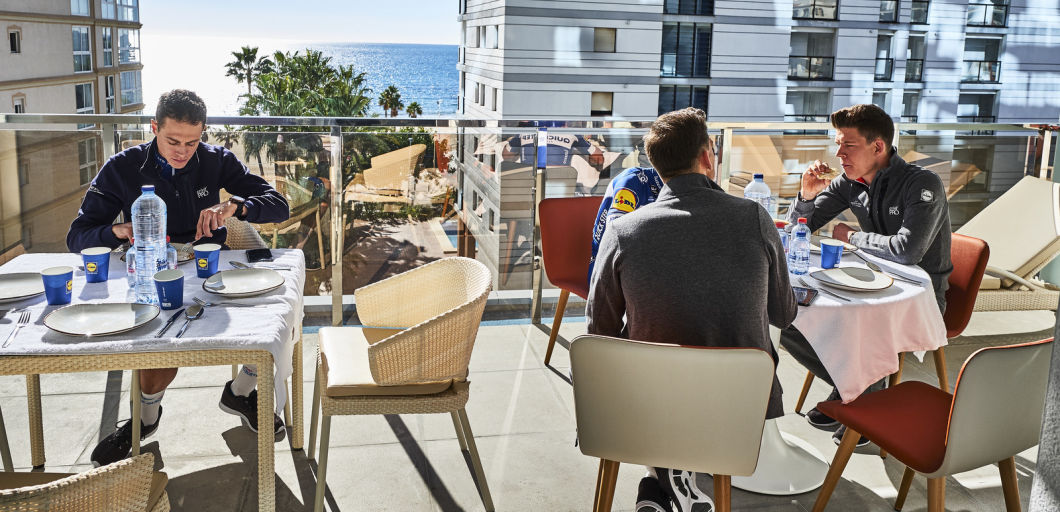Q&A with Kevin Daems
Quick-Step Floors'spectacular chef – who came across from Kookeiland, the team's cooking partner for several years – sat down to reply to our fans' questions and take them beyond the scenes in our kitchen during a stage race.
When did you start working with the team?
I started working with the team three years ago. My first meeting with the team was in Denia, at the January training camp, where the whole squad was. I was very nervous, I didn't know much about cycling but it was a big experience, serving for all these big guys like Boonen, Niki Terpstra, Tony Martin and so on – all the great riders.
How does your race program look?
This year, I have scaled up a bit, which means I do almost all the World Tour stage races, starting from Paris-Nice, Volta a Catalunya and Pais Vasco, and going through Dauphiné, Giro d'Italia, Tour de France and Vuelta a España. The big three and the one-week races of the spring, basically.
Why is it important to have a designated team chef?
Everybody knows that getting the right nutrition and food can make the difference between winning and losing. When I am at the races, the team knows that the riders get only the best food served in the morning and evening, for preparation and recovery – and they never have to wait for it, which is equally important. The hotel restaurants are generally quite alright – the race organizers hand out menus the hotel restaurants have to follow – but having a chef with the team ensures quality food, served smoothly and quickly. In 45 minutes, all riders are served three to four courses.
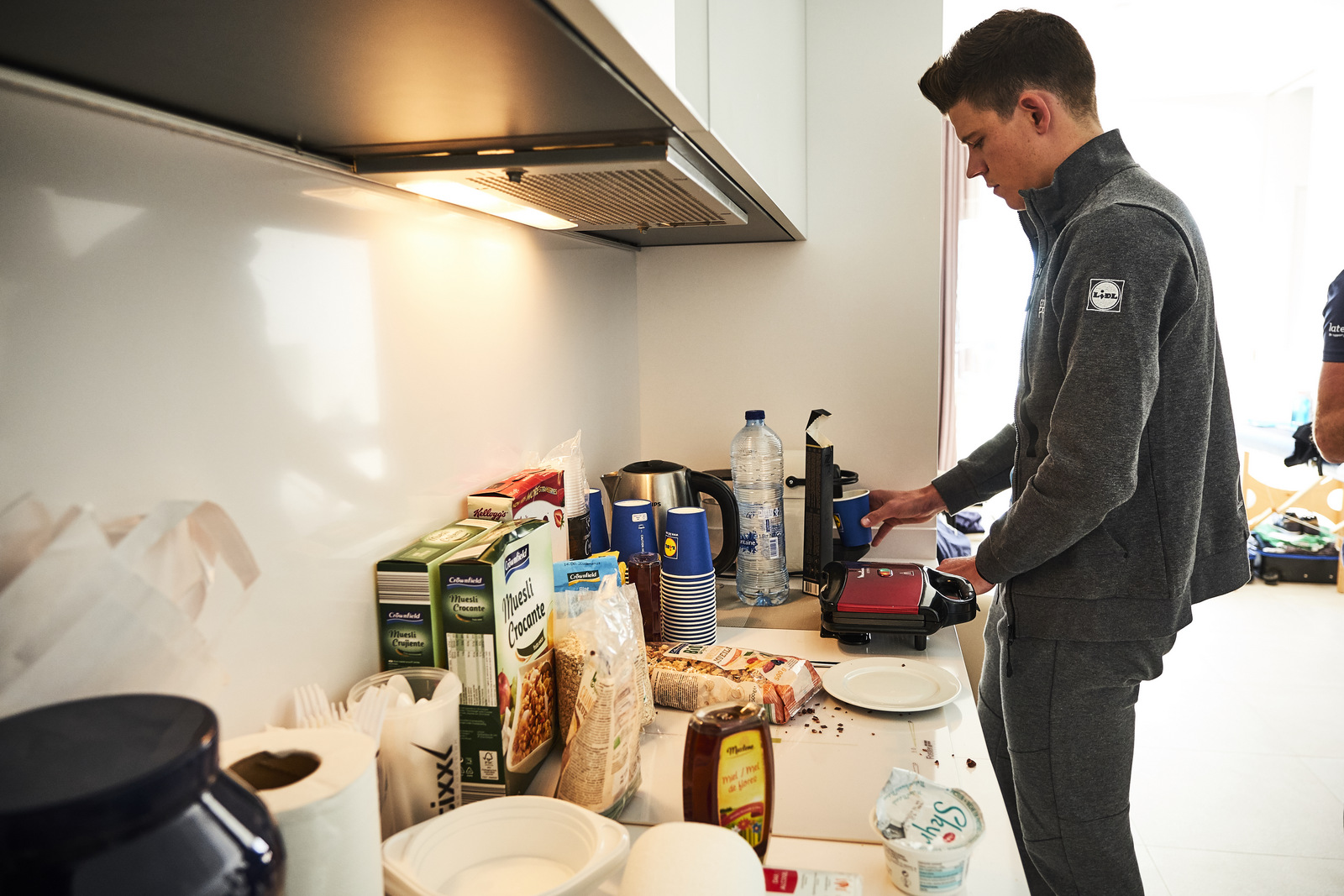
How do you put together a menu containing the right nutrition?
For breakfast, we serve more or less the same every morning: oatmeal, omelettes and pancakes. Always a lot of carbs, they need the energy to get to the top of the mountain or to the end of a stage. We have fruit for vitamins, homemade granola with seeds and nuts, smoothies and ginger tee.
Ginger tee?
Yes, ginger tee is a prerequisite for a good morning for some of the riders. Julian Alaphilippe, for instance, he really loves it and if I don't make it he will for sure ask for it. It is kind of a detox, it is good for the digestive system and to kick-start the body.
What does a typical rider's evening meal include?
A typical rider's meal depends from stage to stage. In a three-week stage race, nutrition is alpha-omega for the ability to perform and stay on top and healthy. It is about finding the right balance between nutritional content and taste.
Before a flat stage we will typically prepare a full vegetable salad high on protein with pasta or rice. As main course, the riders can choose between red meat (steak or veal for instance) or a fatter fish, like salmon or tuna. The dessert can be fatter and contain more sugar than if the next day were a mountain stage, let's say a pistachio-chocolate-strawberry pie.
If the next day brings on a mountain stage, we will prepare a salad with grains instead of vegetables to give a feeling of satiety faster. As main course, the riders will be served with white meat, like chicken and turkey, or white fish, for instance codfish or seabass with a few potatoes and some vegetables, typically around three different kinds. At last, they will enjoy a low-fat dessert.
Is pasta or rice a mandatory for a proper meal? What is the rule?
The riders can choose between pasta and rice every evening. Most of them prefer pasta so I make pasta every night.
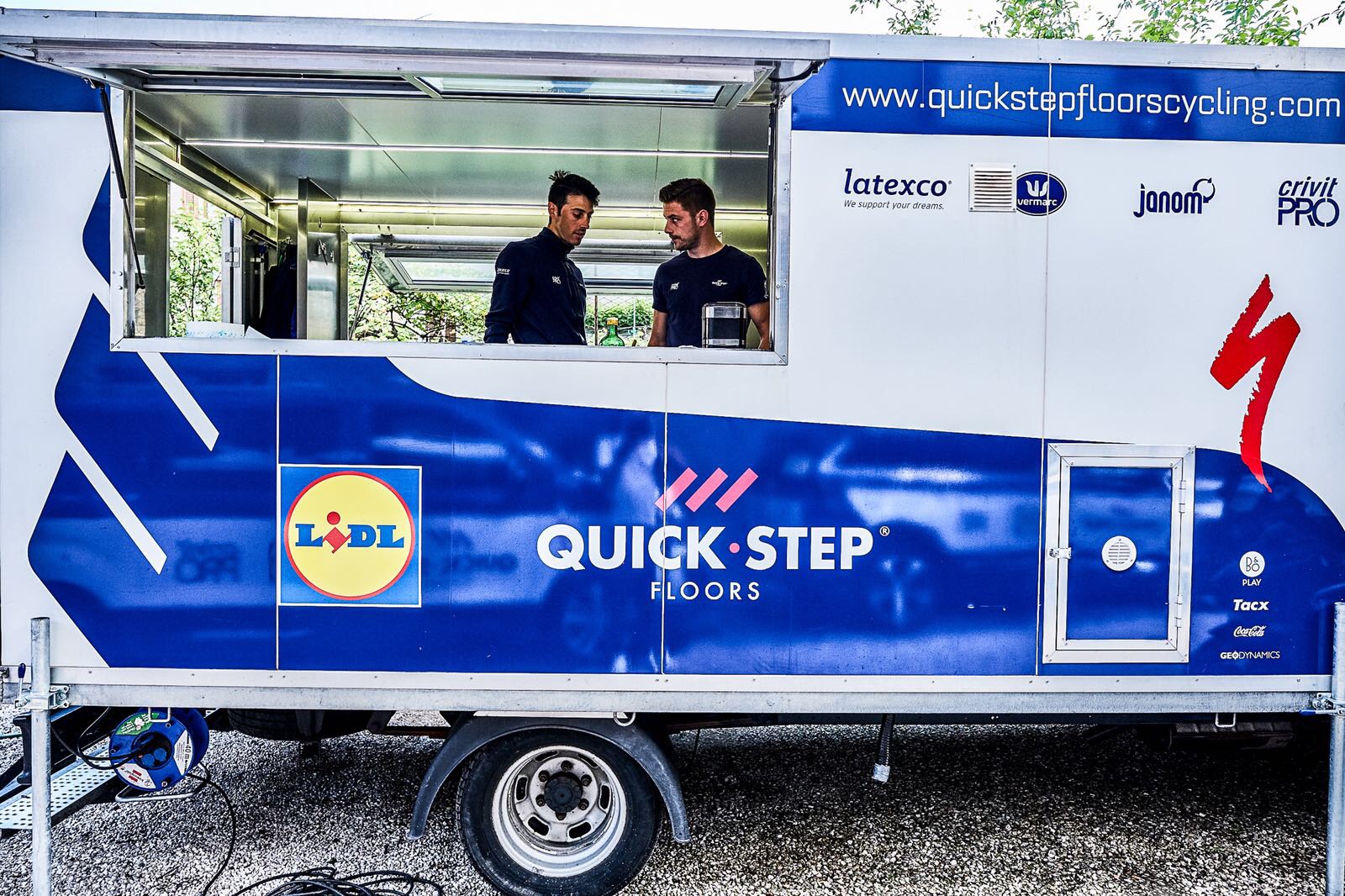
How much effort do you put into making the plate look nice?
I try to make proper looking plates, it is important for the head. If you go to a restaurant and the plate isn't nicely made you don't appreciate the food as much as if it looks delicious too. You don't have this "wow it looks good" feeling, which is something that is really important in a stage race, especially in third week where everybody is tired and have had pasta for three weeks. The ability to make the "same" food look nice, to make the riders eat with the eyes, is something we know is important.
Do you work together with a nutritionist or the team doctor to develop the right menu?
We work closely together with Bakala Academy in the beginning of the season to create the optimal menu for the riders. During the season, if I have some ideas for dishes I send everything through to Bakala to get their expertise on it.
Do you plan the menu before a race start, for instance before Dauphiné?
More or less, I would say. The main ingredients are pasta, rice, meat and salad, the rest depends on what I can get in the supermarkets and hotel restaurants.
How many calories should the riders eat every day?
The riders burn thousands of calories every day and we need to refuel that. During the race, the riders eat a lot of gels and bars loaded with sugar and calories, giving them energy when they are on the bike but it is important to get a proper meal at night and in the morning. I would say the typical riders consume around 5-6.000 calories a day. It is a lot, considering the intake of a normal person should be around 2.000 calories per day.
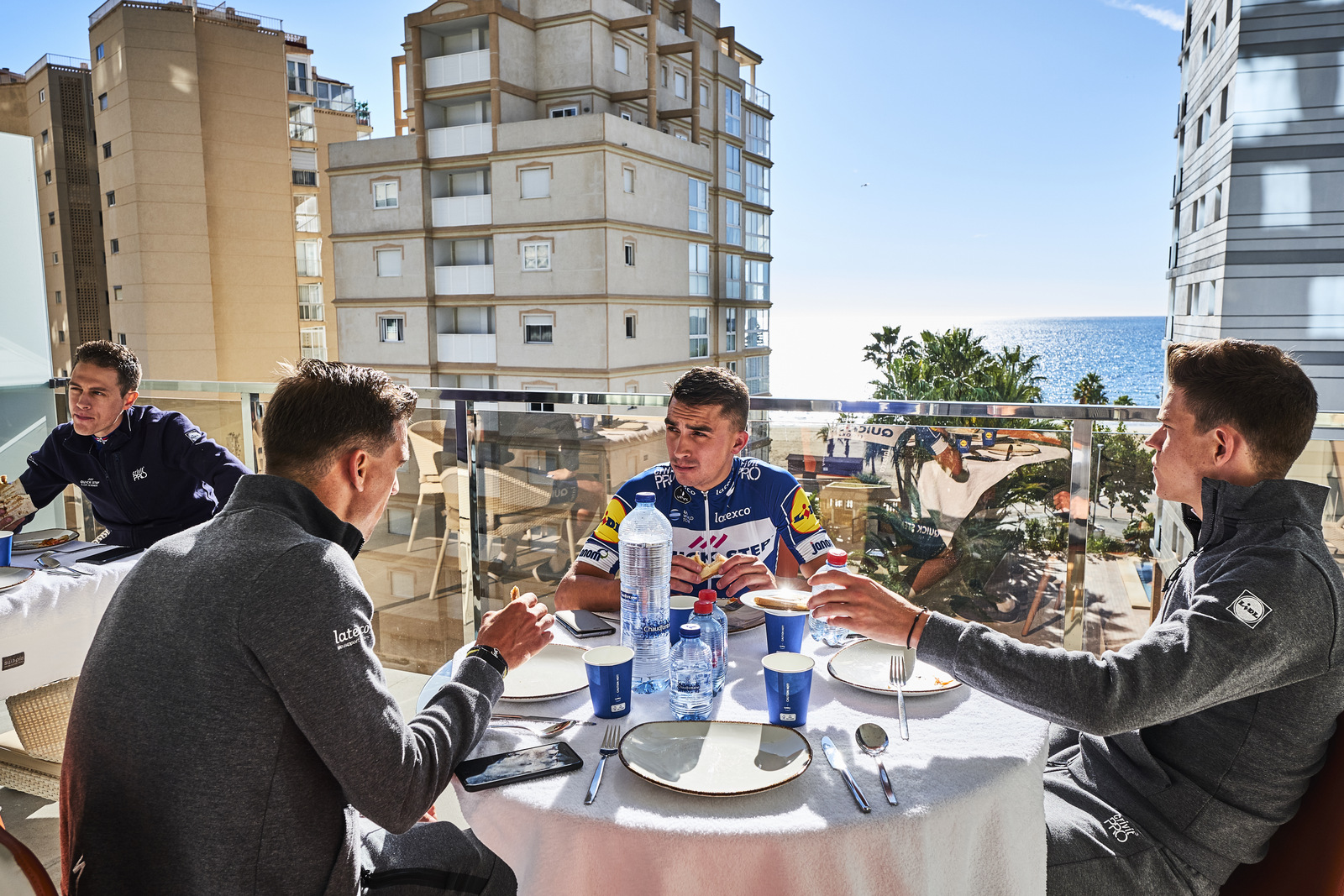
Are there any products or food you would never use, like seafood?
I would probably never serve a cheese fondue, for instance. I never cooked sausages before either but the riders get a burger now and then. I've made a salad with shrimps but it is not often I would prepare seafood in a stage race, especially a raw version as it is often hot in south of Europe and you can't keep it chilled and fresh.
What kind of kitchen equipment do you have in the food truck?
We have a gas hub with two burners, a few electronic pits, a grill/teppanyaki, an oven and a microwave, freezer and refrigerator – so everything that we need to have in a proper kitchen. With the refrigerator, we can usually do two days before we have to go shopping again, which we do on the way to the next hotel. We like to have the food as fresh as possible, which is never really a problem as we are fortunate to have Lidl supermarket in almost every town in France, Spain and Italy.
The secret Quick-Step Granola recipe
100gr Chia seed
100gr Hennep seed
100gr Linseed
100gr Quinoa
250gr Mixed nuts
200gr Dried fruits
100gr Oats
75gr Chocolate dips
Mix it all together in an oven dish and add some coconut oil and a bit of honey. Place the dish in an oven at 160 degrees for 20 minutes... and voilà!
Photo credit: ©Sigfrid Eggers

